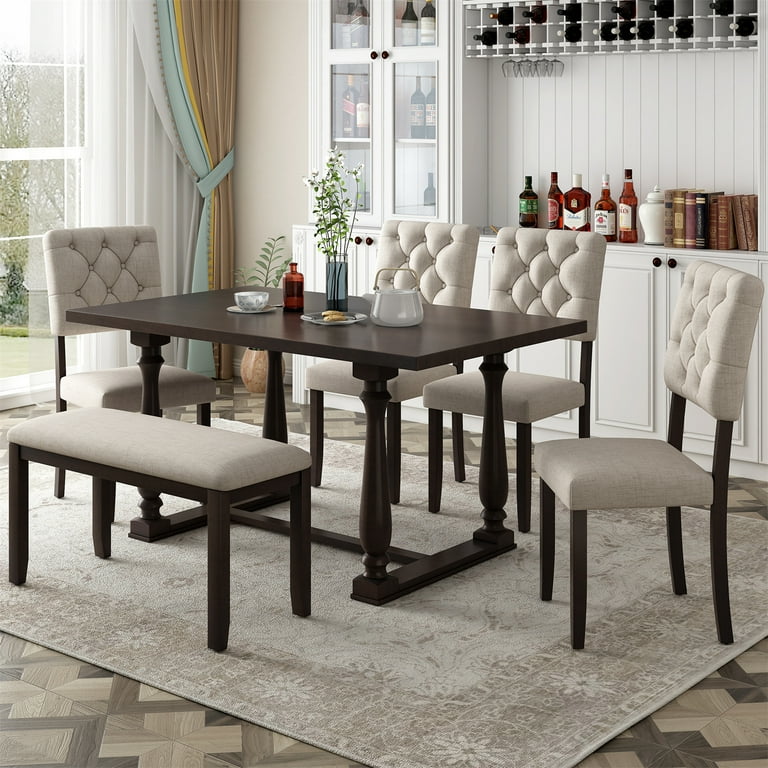From Traditional to Modern: Find the Suitable Dining-room Table Legs for Your Style
While classic styles such as cabriole and transformed legs evoke a feeling of ageless refinement, contemporary designs like hairpin and geometric options provide a chance for striking aesthetic interest. As you consider these components, the question continues to be: exactly how can you flawlessly integrate these diverse leg styles to develop an unified eating experience?
Recognizing Table Leg Styles
The range of dining space table leg styles can dramatically affect both the looks and functionality of the room. Each leg design adds one-of-a-kind aesthetic components and functional functions, catering to diverse design preferences and use needs. Recognizing these designs is crucial for picking the right dining table that lines up with your general interior design vision.
As an example, tapered legs offer a clean, classic look that can boost a room's elegance, while pedestal bases supply security and make best use of legroom, making them excellent for smaller areas. Barrette legs, a characteristic of mid-century modern-day style, present a commercial style, permitting a ventilated, open feel. Trestle legs evoke rustic charm, supplying robust assistance and a feeling of timelessness.
Wood legs can bring heat and appearance, whereas steel choices typically share a streamlined, contemporary ambiance. Ultimately, comprehending table leg styles is essential for creating a natural eating location that shows personal design while guaranteeing practicality and convenience.
Standard Table Leg Options
When choosing dining-room table legs, typical alternatives commonly symbolize ageless sophistication and workmanship. These designs show an abundant heritage and a dedication to high quality, making them perfect for those that appreciate traditional aesthetic appeals.
One of the most famous conventional leg designs is the cabriole leg, defined by its elegant bent form. This style frequently features ornamental carvings and is most frequently located in Queen Anne and Chippendale furniture. Another popular choice is the turned leg, which flaunts a series of smooth, rounded forms that give a traditional look while preserving stability.
Additionally, the straight leg, while simple, supplies a durable and unadorned structure that can blend effortlessly with a selection of tabletop designs. For those drawn to ornate detailing, claw-and-ball feet legs stimulate a sense of splendour and can function as a spectacular prime focus in any kind of eating space.
Lastly, stand bases, although not purely legs, give an alternative conventional choice that allows for ample legroom and can be magnificently carved. Each of these typical leg designs adds to the overall atmosphere of a dining-room, marrying function with visual appeal.
Modern Table Leg Styles
Modern table leg styles use a varied variety of designs that stress ingenious products and tidy lines. These layouts often focus on functionality while acting as striking focal factors within a dining space. Minimalist visual appeals prevail, with legs crafted from products such as metal, glass, and engineered wood, which add to a modern and airy feel.
One prominent style is the barrette leg, identified by its slim, conical framework that gives security without frustrating the tabletop (dining room table legs). This style is usually found in mid-century contemporary furniture and can effortlessly match numerous eating table forms. Another trend is the usage of geometric forms, where legs might tackle unbalanced or angular forms, adding visual interest and a touch of creativity

Blending Designs for One-of-a-kind Rooms
Often, property owners seek to create special dining spaces that reflect their individual style by blending various style components. This approach enables the consolidation of varied aesthetic appeals, leading to a harmonious yet distinctive setting. For example, coupling a rustic wooden table with sleek, modern-day metal legs can develop an appealing contrast that elevates the area's total allure.
In addition, incorporating vintage table legs with contemporary tabletops can stimulate a sense of history while keeping a modern-day sensibility. Such mixes not just display individual preference yet additionally encourage creative thinking, enabling homeowners to curate an area that really feels both individual and welcoming.
Shade plays an essential function in this blending process; selecting table legs that complement or comparison with the existing color design can boost aesthetic passion. As an example, whitewashed legs can soften the boldness of a dark table surface area, producing a well balanced aesthetic.
Tips for Picking the Right Legs
Picking the right table legs is essential for achieving both functionality and visual appeal in your eating room. Begin by taking into consideration the overall design of your space. Standard settings gain from legs that include detailed carvings or transformed designs, while modern rooms might require smooth, minimal styles.
Next, examine the height and stability of the legs. dining room table legs. Basic table range between 28 to 30 inches in elevation, so ensure the legs enhance this dimension for convenience. Additionally, robust products, such as hardwood or metal, can boost security and long life
Examine the leg shape also-- choices include straight, tapered, or great post to read stand styles. Straight legs use a traditional appearance, while conical legs can add a touch of beauty. Pedestal bases supply adequate legroom and are suitable for smaller spaces.
Final Thought
In recap, picking the optimal dining space table legs calls for cautious consideration of both traditional and modern designs. By integrating leg style, height, and material with the total decor, a cohesive and inviting atmosphere can be accomplished.
The selection of eating area table leg styles can significantly affect both the looks and capability of the room. Eventually, comprehending table leg styles is vital for developing a cohesive eating area that mirrors personal style while ensuring functionality and convenience.One of the most renowned traditional leg designs is the cabriole leg, defined by its graceful curved shape. Straight legs offer a traditional look, while conical Extra resources legs can add a touch of sophistication.In recap, picking the ideal dining space table legs calls for careful factor to consider of both traditional and modern styles.